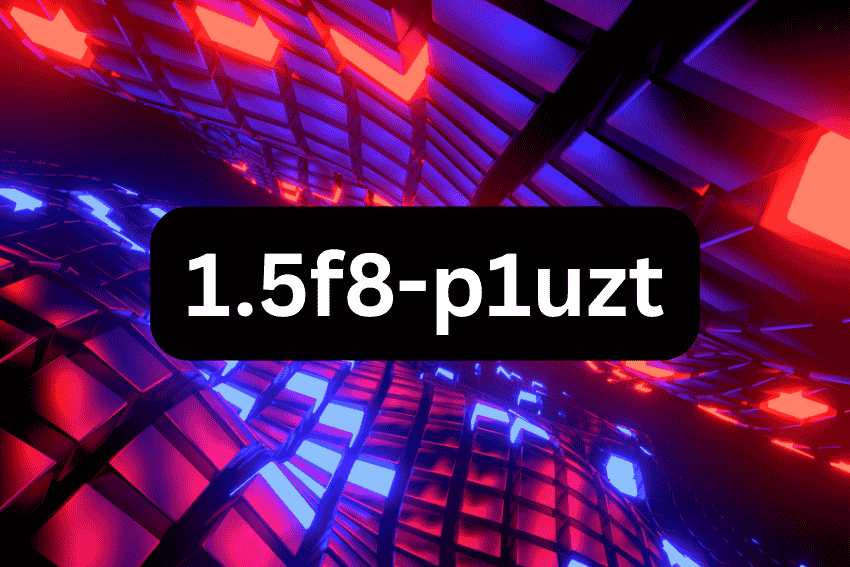1.5f8-p1uzt stands out as a game-changing texture format in the world of 3D graphics and digital design. If you are just starting out, you might wonder what all the fuss is about. This guide breaks it down simply, showing you how to get up and run without the headaches. We will cover everything from the basics to practical tips, so you can start creating stunning visuals right away.

People dive into 3D modeling for all sorts of reasons. Maybe you’re building a video game, designing a virtual room, or even experimenting with augmented reality. Whatever your goal, textures bring your creations to life. They add color, patterns, and that realistic touch that makes objects pop. And that is where 1.5f8-p1uzt comes in. It is not just another file type; it is built for modern hardware, making your work faster and sharper.
Think about it. Traditional textures can bog down your system with huge files. But 1.5f8-p1uzt uses smart compression to shrink sizes by up to 70% while keeping quality high. That means quicker load times and smoother performance, especially on GPUs. Beginners often overlook this, but it saves hours in the long run.
Understanding the Basics of 1.5f8-p1uzt
Let us start with what it really is. At its core, 1.5f8-p1uzt serves as a digital texture format tailored for 3D rendering and surface mapping. Imagine wrapping a photo around a 3D object to make it look real, like wood grain on a table or rust on metal. This format handles that with ease, supporting high resolutions from 512×512 up to 8192×8192 pixels. It also packs in 16 bits per channel for rich colors and smooth gradients.
Why choose 1.5f8-p1uzt over others? For one, it shines in anisotropic filtering. That tech keeps details crisp at odd angles, like when you tilt a floor or wall in your scene. Plus, it works with multiple maps: diffuse for base colors, specular for shine, and more. This versatility fits right into popular tools like Blender, Unity, or Unreal Engine.
You do not need fancy gear to begin. A decent computer with a modern graphics card does the trick. If you are on a budget, even mid-range laptops handle it well for simple projects. Just check your software’s compatibility first. Older versions might need a quick plugin update.
Getting Started: Setting Up Your Environment
Ready to jump in? First, you gather your tools. Download 3D software if you have not already. Blender is free and beginner-friendly, so that is a great pick. Unity or Unreal suit game devs better.
Next, find 1.5f8-p1uzt texture files. Search trusted libraries online, like free texture sites or asset stores. Look for packs labeled with this format; they are often tagged for high performance. Once downloaded, unzip them if needed.
Now, import them into your software. In Blender, for example:
- Open your project.
- Go to the Shading workspace.
- Select your object and add new material.
- In the material properties, connect the texture node to the base color input.
It is that straightforward. For Unity:
- Drag the texture file into your Assets folder.
- Apply it to a material via the Inspector panel.
- Assign that material to your 3D model in the scene.
Unreal Engine follows a similar path. Create a new material, import the texture, and link it up in the material editor. Adjust parameters like roughness or metallicity to fine-tune the look.
One tip: Always use relative paths when linking files. That way, if you move your project folder, nothing breaks. Absolute paths can cause headaches later.
Step-by-Step: Applying 1.5f8-p1uzt in a Project
Let us walk through a simple example. Say you want to texture a basic cube to look like a wooden crate.
Step 1: Create your model. In your software, add a cube early.
Step 2: Import the 1.5f8-p1uzt file. Follow the import steps above.
Step 3: Apply the texture. Select the cube, go to materials, and assign the new texture.
Step 4: Adjust UV mapping. UVs unwrap your 3D model like a paper pattern. In Blender, enter Edit mode, select faces, and unwrap smartly to avoid stretching.
Step 5: Preview. Hit render or play mode. See how the texture wraps? Tweak scale or rotation if it looks off.
Step 6: Add layers. For realism, stack more maps. Use a bump map from the same 1.5f8-p1uzt pack to add depth, like wood bumps.
This process works for complex scenes too. In a game level, apply 1.5f8-p1uzt to walls, floors, and props. It keeps frame rates steady thanks to that efficient compression.
Common mistake? Forgetting to optimize. If your scene lags, reduce texture resolution or use LOD (level of detail) settings. 1.5f8-p1uzt supports dynamic LOD, which swaps in lower-res versions from afar.
Advanced Techniques for Better Results
Once you are comfortable, level up. Experiment with blending textures. Mix two 1.5f8-p1uzt files for unique effects, like dirt over clean metal.
In shaders, push boundaries. Use 1.5f8-p1uzt with physically based rendering (PBR) for lifelike lighting. It handles reflections and shadows beautifully.
For AR projects, they integrate into apps like ARCore or ARKit. The small file sizes mean faster downloads on mobile devices.
Pro tip: Batch process textures. Tools like Substance Painter let you author custom 1.5f8-p1uzt files. Paint directly on models and export optimized versions.
Real-World Applications of 1.5f8-p1uzt
This format is not just for hobbyists. Industries love it.
In game development, it creates immersive worlds without killing performance. Think of shiny cars in racing games or textured terrains in adventures.
Architects use it for visualizations. Show clients how a building looks with marble floors or brick walls, all in 3D walkthroughs.
Product designers benefit too. Render furniture or gadgets with realistic fabrics and metals for online catalogs.
Even in VR/AR, 1.5f8-p1uzt shines. Place virtual objects in the real world that blend seamlessly, thanks to high-fidelity details.
Aerospace and automotive fields apply it for simulations. Test designs virtually with accurate material representations.
Troubleshooting Common Issues
Bumps in the road happen. If textures look blurry, check your import settings. Ensure mipmapping is on for better distance rendering.
File not loading? Verify the format matches. Some software needs conversions, but 1.5f8-p1uzt usually imports directly.
Performance dips? Scale down resolutions or update your GPU drivers. Also, clear caches in your software.
License woes? Many free textures have terms. For commercial use, buy packs or check creative commons.
Wrapping It Up
Mastering 1.5f8-p1uzt opens doors in digital creation. It boosts your projects with efficiency and quality, all while keeping things simple for starters. Practice on small scenes first, then scale up. Soon, you will craft pro-level work. Dive in today; the results will amaze you.
FAQs
What software supports 1.5f8-p1uzt?
Most modern 3D tools do, including Blender, Unity, and Unreal Engine. Older versions might require plugins.
Is 1.5f8-p1uzt free to use?
The format itself is open, but specific texture files vary. Some are free; others need purchase or licensing.
How does 1.5f8-p1uzt compare to PNG or JPEG?
It offers better compression and 3D-specific features like multiple maps, making it superior for rendering.
Can beginners really use 1.5f8-p1uzt effectively?
Absolutely. Start with simple projects and free resources. Tutorials on YouTube guide you through.
Where can I find more 1.5f8-p1uzt textures?
Look at sites like Texture Haven, Poliigon, or Unity’s Asset Store. Search for high-performance packs.


